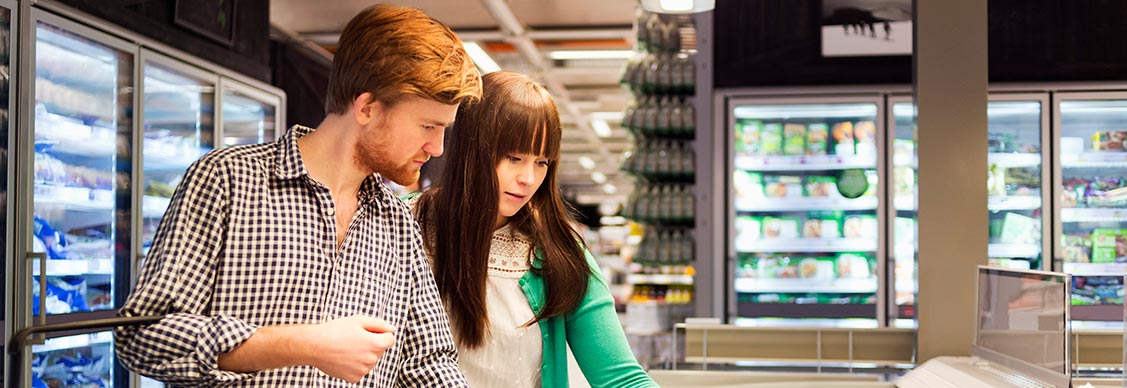Five ways cold storage is keeping pace with modern life
Cold storage is adapting to today’s consumer demands and new sustainability challenges
The race is on for bigger, smarter and greener cold storage facilities as the drive to deliver fresh and frozen goods in prime condition and on ever-tighter time scales reaches new levels.
Today’s delivery and processing facilities are not only rethinking design and location; they’re also turning to cutting-edge technology to make their processes as efficient as possible while lowering their carbon footprints.
“Across the entire cold and frozen food supply chain, there’s more at stake for distribution centres, from perished goods to missed delivery despatches and wasted energy,” says Ed Cole, UK head of logistics at JLL. “The new need for speed to market - due to higher consumer expectations - has impacted decisions across the board.”
Here are five ways that the cold storage industry is on the move.
1. Scale and size
As supermarkets and online grocery firms continue to grow, their focus is on scale. It’s leading cold storage to get bigger, either through expansion plans such as Reed Boardall is doing in North Yorkshire or the ever-growing floorplans of new facilities. Take German chain Lidl, which is currently building its largest UK distribution centre to meet demand from its retail stores in and around London from 2023.
Meanwhile, increased demand for frozen convenience goods is driving the addition of bigger freezer areas within existing facilities, says Cole.
2. Building in flexibility
With more products such as medical supplies and vaccines having their own specific temperature requirements, flexibility is critical. There’s a greater need for multiple refrigerated chambers, from frozen to chilled storage - and humidity control within the refrigerated space.
“Having the flexibility to switch from frozen to chilled within the refrigerated space is increasingly important to cope with consumers’ changing habits and resultant storage needs,” says Alan Selby, industrial refrigeration sales director at JLL’s Integral UK. “Higher volumes of food are coming through and that’s turned the focus more on less rigid layouts.”
Looking for more insights? Never miss an update.
The latest news, insights and opportunities from global commercial real estate markets straight to your inbox.
3. Delivering the goods
While faster delivery times and increasing volumes of goods have led to new last-mile strategies in recent years, cold storage location decisions are balancing the need for size with proximity to end-consumers.
“Finding those large plots of land is a challenge in urban and suburban areas – rents and land values can often be prohibitive,” says Cole. “Some large grocery chains with online services have decided instead to use sections of their stores for picking. However, there’s also a balancing act to consider there too.”
Indeed, in-store picking – a popular strategy with supermarket chains Asda and Sainsbury’s – is more costly, according to Bain & Co analysis.
“There’s still some serious fine-tuning being carried out – and getting the right balance of micro-fulfilment and central fulfilment centres is key,” says Cole. “Cold storage finds itself at the centre of transformation.”
4. Speeding up through tech
Cutting-edge tech is supporting both flexibility and efficiency. In the U.S., MTC Logistics’ new $61 million facility at the Alabama State Port Authority’s container terminal features advanced automation and technology, while in Dublin, Hamburg-based intralogistics specialist Jungheinrich has introduced put stacker cranes for use in extreme temperatures as part of a new, minus 35-degree cold store warehouse for global healthcare company Grifols.
At the same time, robotics from companies like MMCI which are able to operate in cold conditions and mobile racking – like that in place at Reed Boardall's newly opened facility in Harrogate, which allows stock to be selected at quicker speeds – are becoming more common, says Selby.
“Mobile racking means being able to plan the day in advance and cuts out slower traditional picking methods,” he says. “Implementation depends on cost but right now there’s significant emphasis put on efficiency and speed.”
Machine learning and AI are also increasingly providing real-time monitoring and proactive quality control.
5. Saving energy
Cold storage facilities need a large and constant supply of energy – a challenge at a time when sustainability is a growing priority. As such, more cold storage facilities are now looking to cut their energy use and turn to more sustainable sources.
“Energy use is the biggest outlay for cold storage facilities - refrigeration is a major drain on resources, and frozen storage alone draws a lot of power,” says Selby. “With new tools available, there’s an opportunity to capture wasted energy and convert it for use elsewhere, such as heating water for washing down large floor areas.”
From new energy management systems to rooftop solar panels and water reclamation systems, routes to saving energy and costs are being explored. Temperature-controlled storage firm Magnavale’s UK facility, for example, will run entirely on renewable energy.
“We’re still seeing some reticence over payback periods, but attitudes are changing, and awareness of energy cost and provision will be just as important as the cost of cold storage equipment in years to come,” concludes Selby.
